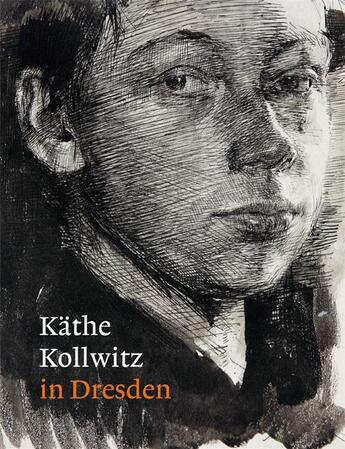Merci à toutes et à tous pour cette aventure collective
Passionné(e) de lecture ? Inscrivez-vous
gratuitement ou connectez-vous pour rejoindre la
communauté et bénéficier de toutes les fonctionnalités du site !

The Dresden Kupferstich-Kabinett (Museum of Prints, Drawings and Photographs of the Staatliche Kunstsammlungen Dresden), which has one of the greatest collections of prints and drawings in Europe, has particularly important and unique holdings of the work of the outstanding German graphic artist Käthe Kollwitz (1867-1945). Kollwitz formed a long association with Max Lehrs (1855-1938), a leading art historian and then the director of the Dresden Kupferstich-Kabinett, and Lehrs became Kollwitz's discerning supporter.
From 1898 Lehrs began buying Kollwitz's work systematically - which, in the Germany of Kaiser Wilhelm II, was a remarkable thing for a man in his position to do, considering that she was a woman artist with marked socialist leanings. Indeed the fi rst work he purchased for the Dresden Museum was her provocative cycle entitled The Weavers' Revolt. Lehrs went on to purchase more than 200 works for the Kupferstich-Kabinett, taking care to document their evolution. The Kupferstich-Kabinett holds a rich correspondence between Lehrs and the artist, which has been newly researched and analysed. Since Lehrs collected contemporary graphic art internationally - for example Whistler, Munch and Toulouse- Lautrec - the signifi cance he attached to Kollwitz's work is all the more telling: this renowned print scholar called her «one the greatest talents in the fi eld of the graphic arts».
The exhibition - and especially the catalogue - tell the circumstances and story of the earliest public holding of Kollwitz's work to be established and of Kollwitz's full development of her major themes - of war and death, of motherhood and love, and not least of self-portraiture, one of the most fascinating aspects of her oeuvre.
This relationship between artist and curator was and is exemplary for its time and our time, while the historical perspective and contextualization of these newly re-examined and freshly assessed works reveals new aspects of the artist, who should be much better known in the English-speaking world.
Il n'y a pas encore de discussion sur ce livre
Soyez le premier à en lancer une !

Merci à toutes et à tous pour cette aventure collective

Lara entame un stage en psychiatrie d’addictologie, en vue d’ouvrir ensuite une structure d’accueil pour jeunes en situation d’addiction au numérique...

Un douloureux passage à l'âge adulte, entre sensibilité et horreur...

Blanche vient de perdre son mari, Pierre, son autre elle-même. Un jour, elle rencontre Jules, un vieil homme amoureux des fleurs...